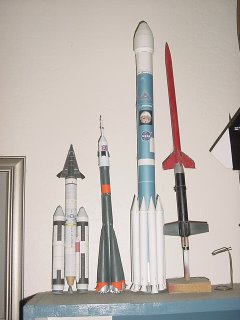One summer Dad sent me off to work at Crazy Jose’s pig farm. I think I was about sixteen, and I suspect the decision to send me to pig hell had more to do with getting me out of the house for a couple of weeks than with my potential development as a human being. The pig farm was out in Harquahala Valley, a patch of sun-blasted desert more or less indistinguishable from Hell. The pig farm was interesting experience, to wit:
There were about twelve of us working at the farm. Ten of us were young male Mexicans. In today’s language they would be called “undocumented workers”. Back in the 1970s, they were called something else. They generally referred to one another as “mojies”, which I believe to be a contraction of
mojados, or “those who are wet”. Today we avoid the use of terms like “wetback” and “mojie” because they express a kind of neo-colonialism, but back then, they weren’t so much terms of opprobrium as socio-economic labels. The eleventh guy at the pig farm was a much older gentleman, also a mojie, who did the cooking. The twelfth guy was me, a pudgy white suburban kid. My job was to provide unintentional comic relief.
The defining characteristic of a pig farm is the presence of large numbers of pigs. Pigs are gruesome creatures, as far as I’m concerned. Back in the 1970s the west side of Phoenix was dotted with feed lots and on warm summer nights the smell of concentrated cattle manure could rise to nearly life-threatening concentrations, but cow manure is ambrosia compared to the vile sticky mess that is pig shit. (It doesn’t deserve the discreet nomenclature “manure”. It is not manure. It is
shit, pure and simple.) Black, vile, odiferous, heaped up in banks, wallowed into mud holes, it was literally everywhere.
But pig shit was a picnic compared to what we fed the pigs. Jose had worked out an arrangement with the Shamrock Dairy where he bought any of their products that could not be sold in grocery stores. And this was the 1970s, before people developed the hair trigger reflex to check the sell-by date on their dairy products. Every so often (my memory says “weekly”) a crew would drive from the pig farm to the Shamrock Dairy, which was more or less in downtown Phoenix, and we would load the tractor-trailer rig with whatever Shamrock didn’t want. Milk, cream, orange juice, essentially anything the dairy couldn’t sell went into the truck. Even potato chips and bread, though exactly how they ended up at the dairy remains a mystery to me.
So we’d drive this mess back to the pig farm, trailing a cloud of rotten milk gas. I remember riding in the trailer, sitting atop leaning heaps of dead and dying milk, heaving half-pints of milk at road signs. It’s a wonder nobody was ever killed riding on that trailer, or that we weren’t struck by lightning by a vengeful God for our sheer gall.
Back at the pig farm, one would now face the job of dumping the rotten dairy products into the tank. The tank was a large cylindrical water tank with no top. One stood on a rickety wooden platform next to the tank, grabbed cartons of milk off the truck, and dumped them into the open top of the tank. The stench that rose from the tank defies description – the mere memory of it makes my eyes water to this day. The stuff in the tank looked a bit like soupy sour cream, but it usually couldn’t be seen because there was a foot-thick layer of foamy dairy froth floating on top of the goop. Flies were attracted to it in droves, and as they tried to land on the dairy froth, they got stuck, sank in, and drowned. The mess looked a little bit like bread pudding with raisins.
The drill was to grab a half-gallon carton of milk in either hand, raise them over your head, and swing them down smartly and smack them on the rim of the tank. The impact would blow the top of the carton open and eject the semi-fluid contents in one vile operation. But sometimes you’d encounter cartons that had already blown open. It was so hot, and the milk was so rotten, that the gas pressure in the cartons had risen beyond the bursting point of the cartons. You’d grab one of these jewels and give it a hearty downward swing, and it would eject its contents on the way down and spray you with rotten dairy product. Curiously, the more rotten the milk was, the less objectionable it was. When milk went really, really rotten it separated to two substances, a straw-colored clear fluid floating on top of a somewhat gelatinous cheesy mass in the bottom of the carton. The cheese wouldn’t usually fly out, so you just got a light shower of the straw-colored whey, which attracted flies and wasn’t exactly pleasant, but it wasn’t horrible. It was the partially-rotten milk that I really hated – imagine being sprayed with sun-warmed sour cream, and not being able to take a shower for a week, and you’ve got the general idea.
To feed the pigs, one pulled a lever that opened a gate. The stuff in the tank – flies, froth and all – flowed into troughs and the pigs went wild, slurping it up as though it were ice cream. Whenever people tell me they own a pet pig, I can’t help but think about hundreds of pigs all covered with spoiled milk, dead flies and pig shit.
The evening meal was always the same: a pot of beans that had been spiced to the point they had become radioactive, and one head of lettuce per person. The lettuce wasn’t cut up or anything; it was literally a head of lettuce, and you’d eat it as you would eat a large apple. The drill was to eat the beans until your nose was running like a junior member of the Niagara Falls and your eyes had swollen shut, and then to eat lettuce until you stopped breathing flames.
All of us slept in a single gutted trailer house. Someone had removed all the interior walls with a sledgehammer and there was no furniture; we slept on the floor. Now recall that the evening meal always consisted primarily of beans. The ripping was not to be believed, and the constant reek of hydrogen sulfide was in some ways worse than the pig shit and rotten milk. To this day I retain memories of twelve people all farting in unison, and nobody being the slightest bit abashed about it. Had we tried to be polite and hold our gas until we could expel it in private, we would have plumped up like Ball Park Franks and exploded.
One weekend one of Jose’s other employees showed up. All I remember is that he was a
NorteAmericano and was the kind of guy you didn’t really want to spent time with on an elevator. He wasn’t actively evil, but he had a kind of shifty ne’er-do-well aspect about him that made one wary of trusting him with cameras or expensive wristwatches. His mission was to fix a rickety old truck, and through some mysterious troubleshooting technique that mainly involved a lot of glum staring at the truck, he conceived the notion that there was something wrong with the fuel line. So he crawled under the truck with a hacksaw and started to cut the metal fuel line. Gasoline soon poured from the partially-severed fuel line, and as he fiddled with the saw he touched the positive terminal on the starter. Sparks flew, and soon gouts of orange flame leaped up from the pooled gasoline.
Someone ran off to get the garden hose, but in the meantime all we had to fight the fire was milk. We literally threw half-gallons of milk at the truck, a bizarre form of dairy fire suppression that I can safely report had zero impact on the fire. Eventually we pushed the truck out of the garage before it burned the building down, but the truck, as I recall, was history.
I like to think that I learned something from this experience, and I suppose in a way I did – I learned that I really don't care to work on a pig farm again.


